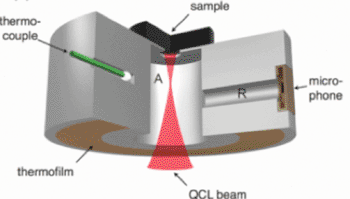Noninvasive Technology Monitors People with Diabetes
By LabMedica International staff writers
Posted on 11 Nov 2013
One of the keys to healthful living with Type 1 and Type 2 diabetes is monitoring blood glucose levels to ensure they remain at stable levels, which can easily be done at home using electronic devices with a drop of blood. Posted on 11 Nov 2013
A noninvasive technique has been devised that uses the resonance-enhanced pulsed photoacoustic spectroscopy in the ultrasound range using a newly designed, windowless resonator cell that could replace the need for a finger prick.

Image: A photoacoustic cell for in vivo measurement of the absorption spectra of human epidermis (Photo courtesy of Johann Wolfgang Goethe-University).
Scientists at the Johann Wolfgang Goethe-University (Frankfurt, Germany) have devised a novel, noninvasive way to make monitoring easier. They used an infrared laser light applied on top of the skin, to measure sugar levels in the fluid in and under skin cells to read blood sugar levels.
Their new optical approach uses photoacoustic spectroscopy (PAS) to measure glucose by its mid-infrared absorption of light. A painless pulse of laser light applied externally to the skin is absorbed by glucose molecules and creates a measurable sound signature that the team refers to as "the sweet melody of glucose." This signal enables the scientists to detect glucose in skin fluids in seconds.
The data showing the skin cell-glucose levels at one-hundredth of a millimeter beneath the skin is related to blood glucose levels. Previous attempts to use PAS in this manner have been hampered by distortion related to changes of air pressure, temperature, and humidity caused by the contact with living skin. To overcome these constraints, the team devised a design innovation of open, windowless cell architecture. While it is still experimental and would have to be tested and approved by regulatory agencies before becoming commercially available as the team continues to refine it.
The scientists are working in close collaboration with Elté Sensoric (Gelnhausen, Germany) as an industrial partner, and they expect to have a small shoebox-sized device ready in three years, followed by a portable glucometer some years later. The authors concluded that their photoacoustic cell could be applied for measurements of glucose in human epidermis in the fingerprint region. However, it can be used for other solid samples with relevant absorption bands in the middle infrared or even other spectral regions if the laser source covers relevant absorption bands of the sample. The study was published in the August 2013 issue of the Review of Scientific Instruments.
Related Links:
Johann Wolfgang Goethe-University
Elté Sensoric













